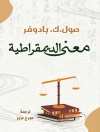Old-age survival has considerably improved in the second half of the twentieth century. Life expectancy in wealthy countries has increased, on average, from 65 years in 1950 to 76 years in 2005. The rise was more spectacular in some countries: the life expectancy for Japanese women rose from 62 years to 86 years during the same period. Driven by this longevity extension, the population aged 80 and over in those countries has grown fivefold from 8.5 million in 1950 to 44.5 million in 2005. Why has such a substantial extension of human lifespan occurred? How long can we live? In this book, these fundamental questions are explored by experts from such diverse fields as biology, medicine, epidemiology, demography, sociology, and mathematics: they report on recent cutting-edge studies about essential issues of human longevity such as evolution of lifespan of species, genetics of human longevity, reasons for the recent improvement in survival of the elderly, medical and behavioral causes of deaths among very old people, and social factors of long survival in old age.
Table des matières
Theoretical and Comparative Biological Concepts.- Research Issues on Human Longevity.- Patterns in Mammalian Ageing: Demography and Evolution.- Life Span Extension in Humans is Self-Reinforcing: A General Theory of Longevity.- Empirical and Analytical Studies of Ageing and Oldest-Old Populations.- Oldest-Old Mortality in China.- Central and Dispersion Indicators of Individual Life Duration: New Methods.- Recent Trends in Life Expectancy and Rectangularisation of the Survival Curve at Advanced Ages in The Netherlands.- The Validation of Exceptional Male Longevity in Sardinia.- Mortality at Extreme Ages and Data Quality: The Canadian Experience.- Causes of Death and Biological Frailty.- Causes of Death among the Oldest-Old: Validity and Comparability.- Causes of Death among the Oldest-Old: Age-Related Changes in the Cause-of-Death Distribution.- Genetic Factors Associated with Individual Life Duration: Heritability.- Mortality among the Least Frail: Lessons from Research on the APOE GENE.- Sex, Gender, and Social Determinants and Consequences of Mortality.- Social Determinants of Mortality in the Oldest-Old: Social Class and Individual Way-of-Life.- Social Differences in Older Adult Mortality in the United States: Questions, Data, Methods, and Results.- Mortality Differences by Sex among the Oldest-Old.- Causes of the Trend in Mortality and Morbidity.- Explanation of the Decline in Mortality among the Oldest-Old: The Impact of Circulatory Diseases.- Explanation of the Decline in Mortality among the Oldest-Old: A Demographic Point of View.- Marital Status and Family Support for the Oldest-Old in Great Britain.- Causes of the Trend in Mortality and Morbidity.- Marital Status and Family Support for the Oldest-Old in Great Britain.












